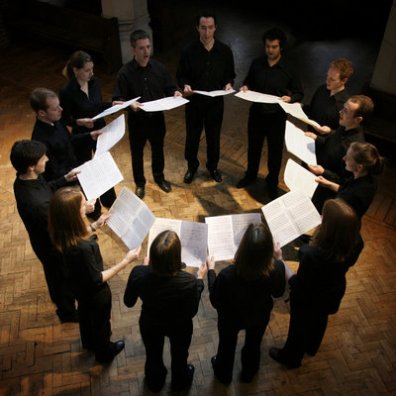Classical Music Review: Stile Antico’s Pillow of Heavenly Sound
Music making of this caliber communicates—yet transcends—the tragic tone of these dramatic, religious texts. It brings both the words and the audience who hears them to life.

Stile Antico: Early music is Big Business, and the singers in this British group have hit—and earned—the Big Time.
By Susan Miron.
Stile Antico, the youthful vocal superstars of Early Music, thrilled a packed St. Paul Church in Cambridge Friday evening. Having wowed audiences at Boston’s Early Music Festival a year ago, Stile Antico was invited back for its winter series. Friday’s huge audience could not have been more pleased about this decision.
The evening opened with three members of Stile Antico giving an informal, pre-concert lecture about the group and the music they were about to sing. The cavernous, reverberant space, perfect for singing voices, was, regrettably, unkind to speaking voices, so much they were saying was lost on my ears.
This group of 13 British singers, who all looked younger than 30, started out by getting together to sing for fun when they were students at Cambridge and Oxford. From the beginning, they worked without a conductor, performing and rehearsing as a democratic chamber music group, responding with unusual sensitivity to texts. In demand worldwide, they have toured with Sting and made several acclaimed recordings. Early music is Big Business, and they have hit—and earned—the Big Time.
Their Friday concert, “In Paradisum: Swansongs and Memorials” by Renaissance Masters, featured several of Early Music’s usual suspects: William Byrd (ca. 1540–1623) , Guillaume Dufay (ca. 1397–1474) , Josquin des Pres (ca. 1450–1521) , Heinrich Schütz (1585–1672), and Orlande de Lassus (ca. 1530–1594) , along with a few composers far less known but exceedingly good. The singers covered 200 years of music, which they see as “a living, breathing organism, not a museum piece.”
Indeed, these singers, in various combinations, seemed to be a living, breathing organism. Their intonation was impeccable, their sounds sublime, the blending of their voices in this high-ceilinged room eerie, unworldly. The texts to their program were unrelentingly sad and tragic, the music simply gorgeous. When the sopranos sang, it was like being lifted onto a pillow of heavenly, soaring sound. Moments of otherworldly beauty abounded.
Clocking in at 23 minutes, the epic motet “Media vita” by John Sheppard (ca. 1515–1558) was both a memorial and swansong. “In the midst of life we are in death,” it begins, and four times begs, “Deliver us not into the bitter pains of eternal death.” The music, slow and peaceful, created a eerily hypnotic effect. I would like this to be the last piece I heard on earth.
One of the pieces was written for the royal funerals (Philip II, King of Spain); another was commissioned by a Saxon nobleman. It would seem everyone had death on his mind during this time of the plague, religious turmoil, and warfare. Most of the composers seemed quite aware of their own impending deaths. Guillaume Dufay’s “Ave Regine coelorum” was composed to be sung around his own deathbed; he pleas for mercy. It was, instead, sung at his funeral. Lassus’s gripping “Vide homo” was written only three weeks before his death.
Music making of this caliber communicates–yet transcends–the tragic tone of these dramatic, religious texts. It brings both the texts and the audience who hears them to life.
Tagged: Boston, Classical Music, Early Music Festival, New England, Stile Antico
